Camellias are one of the most elegant and cherished flowering shrubs found in gardens around the world. Known for their glossy evergreen leaves and showy blooms in shades of white, pink, and red, camellias bring beauty to gardens during cooler months when many other plants are dormant. However, while camellias are widely loved, they have particular preferences when it comes to growing conditions.
If you’re wondering where you can grow camellias successfully, this comprehensive guide will explore their ideal climate, soil, and placement needs — along with planting tips and care recommendations to help your camellias flourish.
What Are Camellias?
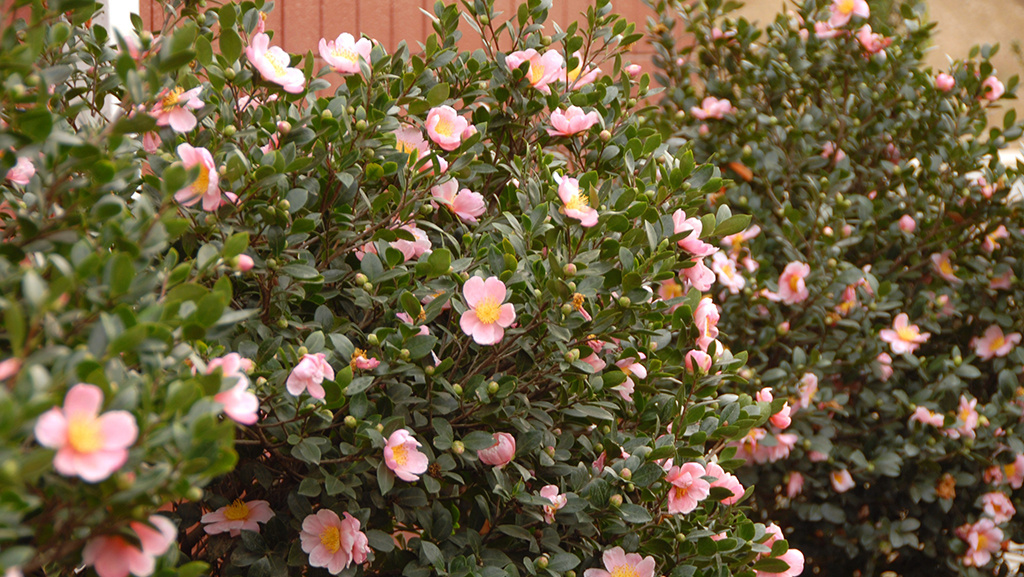
Camellias are evergreen shrubs native to eastern and southern Asia, particularly China, Japan, and Korea. The genus Camellia includes over 300 species, but the most widely cultivated are:
- Camellia japonica — popular for large, showy blooms in winter to early spring.
- Camellia sasanqua — known for smaller, fragrant flowers blooming in fall and early winter.
- Camellia reticulata — prized for massive, ruffled flowers in mid to late winter.
These shrubs typically range from 4 to 12 feet tall, with some varieties capable of reaching 20 feet or more in ideal conditions.
Ideal Growing Zones for Camellias
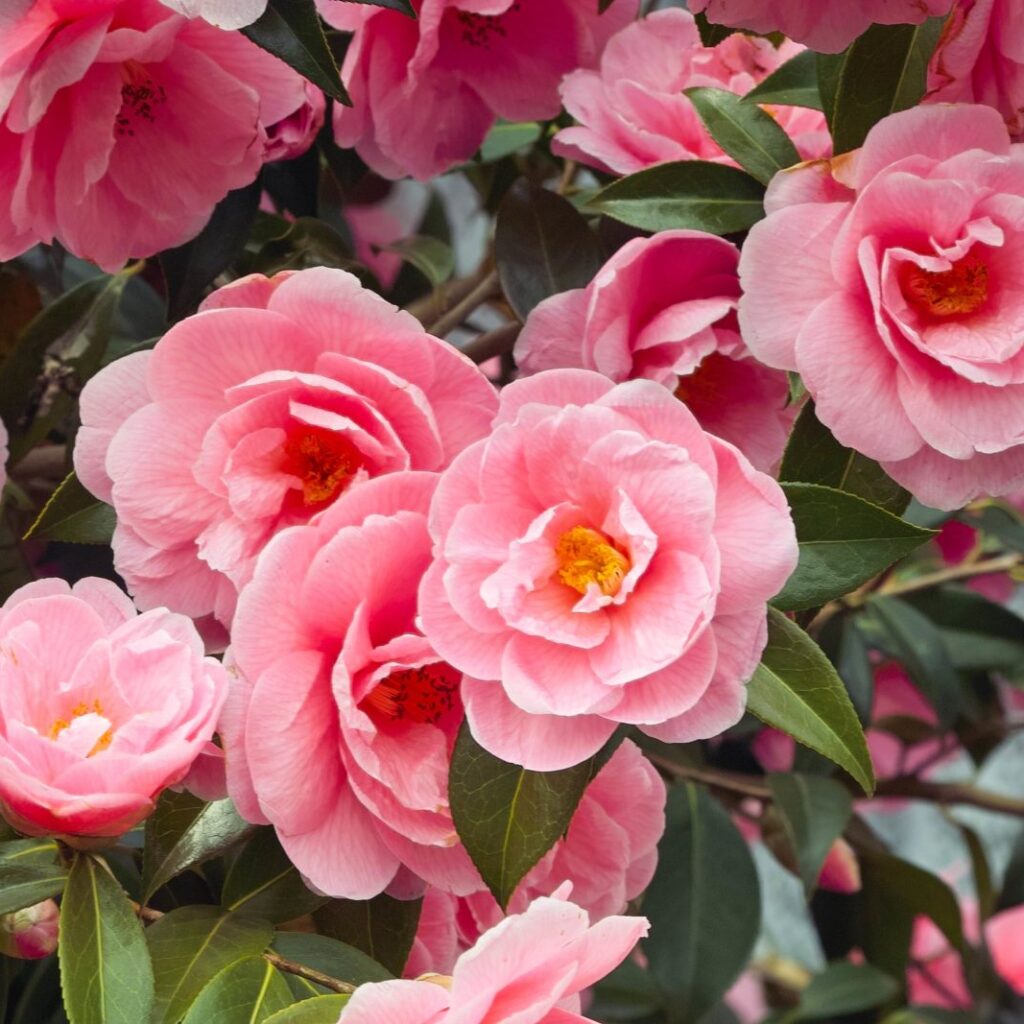
One of the most important factors for camellia success is climate. Camellias are best suited to regions with mild winters and warm, humid summers.
USDA Hardiness Zones:
- Camellia japonica: Zones 7–9
- Camellia sasanqua: Zones 7–10
- Camellia reticulata: Zones 8–10
Note: In colder regions (Zone 6 and below), camellias can be grown in large containers and moved indoors during winter.
Best Locations for Planting Camellias
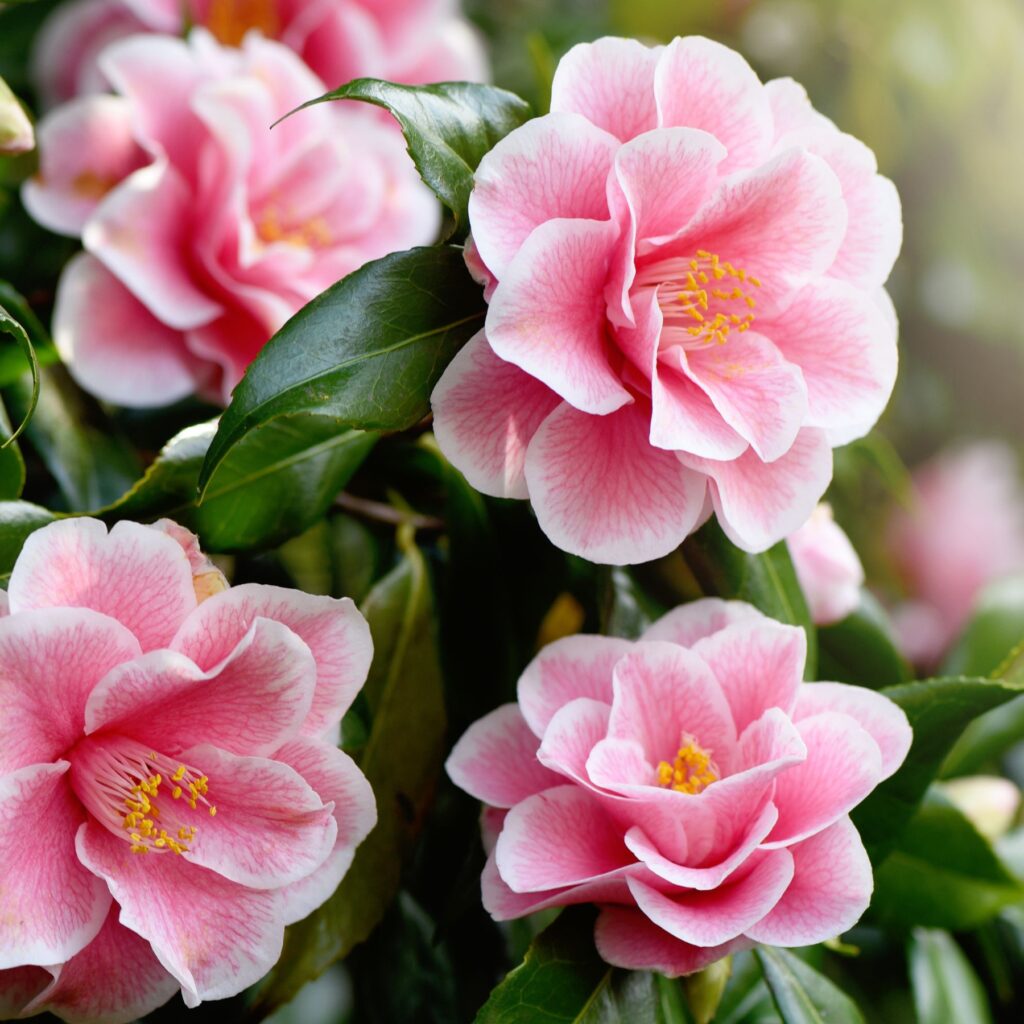
Camellias thrive when planted in carefully chosen locations. The right site can mean the difference between a thriving, flower-laden shrub and a struggling, stunted plant.
Light Requirements
Camellias prefer partial shade or filtered sunlight, especially in hotter climates.
Ideal light conditions:
- Morning sun with afternoon shade.
- Dappled light under tall deciduous trees.
- Avoid full, direct afternoon sun, which can scorch leaves and fade flowers.
Note: Camellia sasanqua varieties tolerate more sun than Camellia japonica.
Shelter from Wind
Cold, drying winds can damage camellia buds and leaves, especially in winter.
Best practices:
- Plant near walls, fences, or hedges for wind protection.
- Position on the east or north side of a building to avoid harsh western sun and strong winter winds.
Well-Drained, Acidic Soil
Camellias require acidic soil (pH 5.5–6.5), rich in organic matter and excellent drainage.
Soil tips:
- Avoid heavy clay or alkaline soils.
- Amend soil with pine bark, leaf mold, or composted pine needles.
- Use raised beds or large containers for better drainage in poor soils.
Container planting:
Use an acidic, ericaceous potting mix when growing camellias in pots.
When to Plant Camellias
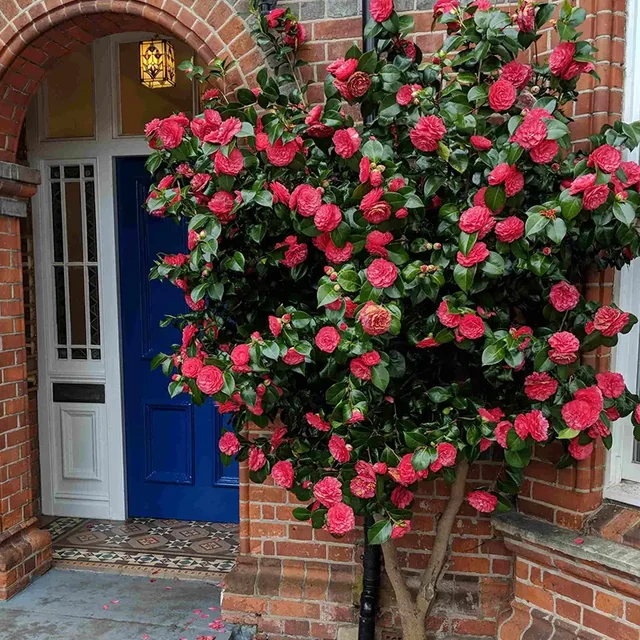
The best time to plant camellias is during their dormant period in fall or early spring.
Why?
This timing allows roots to establish before the stress of summer heat or winter cold.
Tip: Avoid planting during active blooming periods, as this can weaken the plant.
Caring for Camellias
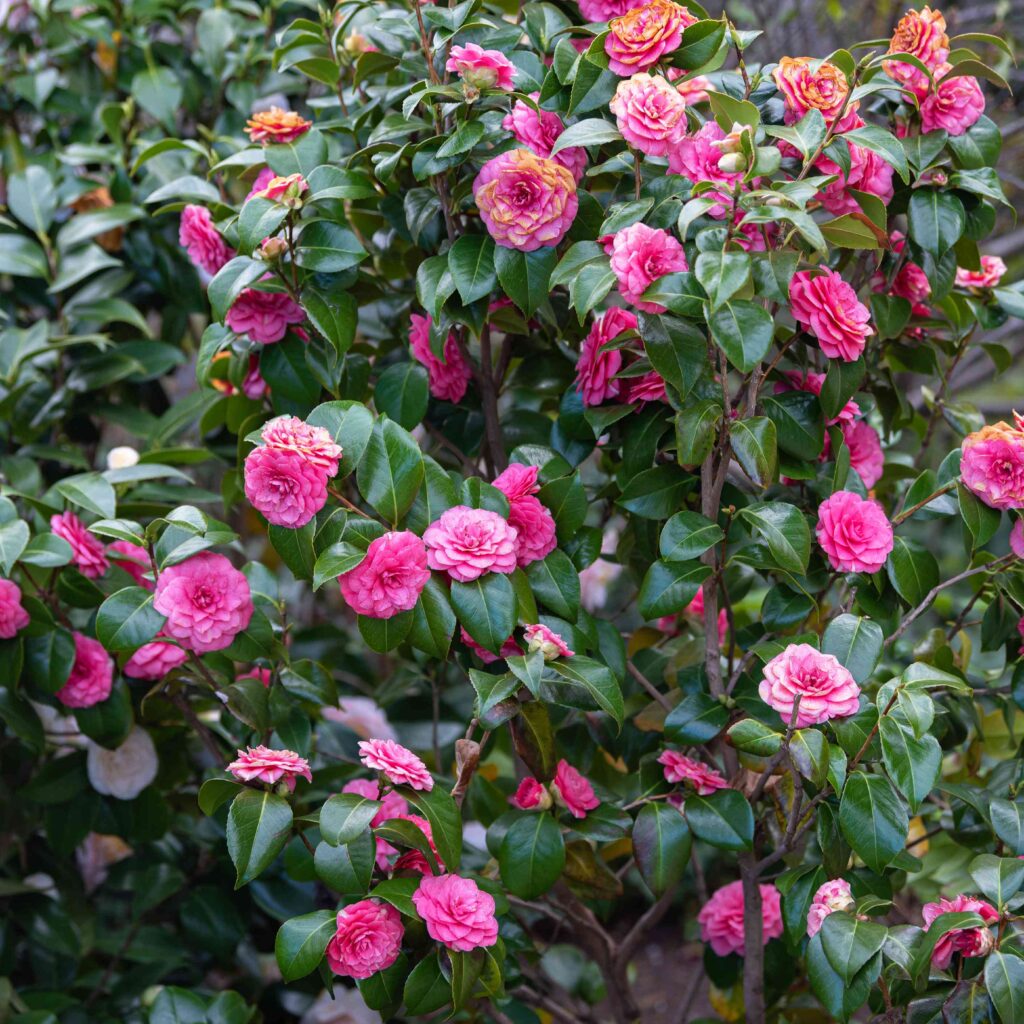
Watering
Camellias prefer consistent moisture but dislike waterlogged soil.
Watering tips:
- Keep soil evenly moist, especially during dry spells.
- Mulch with pine needles or shredded bark to retain soil moisture and maintain acidity.
- Reduce watering in winter when the plant is dormant.
Fertilizing
Feed camellias with a slow-release, acid-forming fertilizer in late winter to early spring after flowering.
Tips:
- Avoid high-nitrogen fertilizers that promote excessive foliage growth at the expense of blooms.
- Do not fertilize after midsummer, as this encourages tender growth vulnerable to frost.
Pruning
Minimal pruning is required — only to shape the plant or remove dead or crossing branches.
Best time to prune:
Immediately after flowering, before new growth begins.
Popular Places Where Camellias Grow Successfully
Camellias thrive in various parts of the world, particularly in regions with temperate climates.
Well-known camellia-growing regions:
- Southeastern United States: North Carolina, South Carolina, Georgia, Alabama, and parts of Louisiana and Texas.
- West Coast USA: Northern California and parts of Oregon and Washington.
- Japan: The birthplace of many historic camellia cultivars.
- China: Particularly in Yunnan and Sichuan provinces.
- United Kingdom: In the milder southern regions like Cornwall and Devon.
- Australia: Especially in New South Wales and Victoria.
Camellias are often featured in historic gardens, public parks, and arboretums around the world.
How to Grow Camellias in Colder Climates
If you live in a region colder than Zone 7, you can still enjoy camellias with extra care.
Tips for cold climate gardeners:
- Choose hardy varieties like ‘Winter’s Snowman’ or ‘April Tryst.’
- Grow in large, insulated containers.
- Move pots indoors to an unheated greenhouse, sunroom, or enclosed porch during winter.
- Protect outdoor plants with burlap screens or horticultural fleece in winter.
- Mulch heavily around the base to insulate roots.
Benefits of Growing Camellias
Beyond their beauty, camellias offer several advantages:
- Evergreen foliage provides year-round structure and color.
- Blooms in fall, winter, or early spring when few other plants flower.
- Attract pollinators like bees in early spring.
- Long-lived, often passing through generations.
- Versatile in hedges, foundation plantings, containers, or as specimen shrubs.
Conclusion
Where can you grow camellias successfully? The answer lies in regions with mild winters and warm, humid summers, in partial shade, sheltered from wind, and in acidic, well-drained soil. With proper site selection and care, camellias reward gardeners with glossy green leaves and elegant blooms for decades.
Whether you’re in the southeastern United States, parts of Asia, or milder regions of Europe and Australia, there’s a camellia species or cultivar for you. And even in colder zones, container gardening opens up the joy of growing these timeless flowering shrubs.
By understanding their preferences and providing the right conditions, you can cultivate a stunning display of camellias — one of the most enchanting additions to any garden.




Leave A Comment